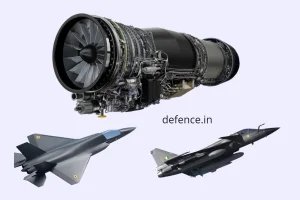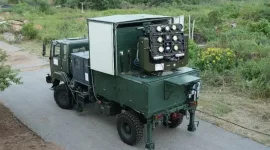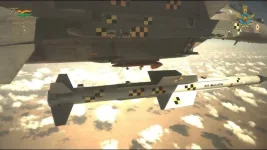- Views: 1K
- Replies: 5
The Indian Institute of Technology (IIT) Kanpur is preparing to introduce the Sabal-50, a formidable new military drone designed to significantly boost the Indian Army's capabilities in both logistics and combat.
Developed by the institute's Department of Aerospace Engineering, this advanced unmanned aerial vehicle (UAV) represents a major step forward in India's drive for self-reliance in critical defence technology.
The Sabal-50, which is currently undergoing pilot testing, is a major upgrade to its predecessor, the Sabal-20, an electric unmanned helicopter already being used for supply missions by the Indian Army's Eastern Command.
With a total weight of approximately 150 kg, the new drone features an impressive 50 kg payload capacity. This allows it to transport essential items such as ammunition, medical supplies, and light weaponry, or be equipped for precision strike missions.
Its design has been tested to withstand harsh weather and operate at altitudes up to 17,000 feet, making it suitable for deployment in challenging environments like the Siachen Glacier.
A key feature of the Sabal-50 is its Vertical Take-Off and Landing (VTOL) capability, which allows it to operate from confined and rugged areas without needing a runway. This is particularly vital for military operations in the mountainous terrain along the Line of Actual Control (LAC) in regions like Arunachal Pradesh and Sikkim.
The drone’s tandem rotor design, inspired by the renowned Chinook transport helicopter, provides exceptional stability and superior lifting power, ensuring reliable performance in diverse and demanding high-altitude conditions.
Engineered for modern warfare, the Sabal-50 is equipped with sophisticated autonomous flight systems that enable it to conduct missions Beyond Visual Line of Sight (BVLOS).
Operations are secured through long-range encrypted communication links, and safety is enhanced by fail-safe protocols like an automatic return-to-base function and a parachute system.
Furthermore, its low-speed rotors produce a minimal noise footprint, increasing its stealth for sensitive reconnaissance and tactical operations. The drone is also fitted with an advanced electro-optical/infrared camera for surveillance day and night.
The development of the Sabal-50 is timely, as recent military engagements have consistently highlighted the critical role of unmanned systems. The need for stealthy, precise, and autonomous platforms for both surveillance and offensive actions is a key lesson from modern conflicts.
The Sabal-50's radar-evasive characteristics and its ability to function in areas where communication signals are weak or jammed make it a highly valuable asset for such complex missions.
Beyond its combat potential, the drone's logistical capabilities are set to transform supply chain operations for the armed forces.
By deploying the Sabal-50, the Indian Army can reduce its dependence on manned helicopters for delivering provisions to remote forward posts, especially in high-altitude areas where access is difficult.
Its versatile, modular payload bay is designed to securely carry a wide range of cargo, making the drone an invaluable tool for disaster relief, humanitarian aid, and counter-insurgency support.
This advanced drone is a product of a successful partnership between IIT Kanpur and EndureAir Systems, a startup incubated at the institute. The project builds upon the operational success of the Sabal-20, which was officially inducted into the army in November 2024.
Reinforcing the "Atmanirbhar Bharat" initiative, approximately 90% of the Sabal-50's components are manufactured in India.
Professor Abhishek, the project's lead, affirmed the drone's robust design.
"The Sabal-50 is engineered to operate in extremely harsh environments, offering unmatched stability and performance for both combat and logistics missions," he stated.
The development was supported by IIT Kanpur's extensive infrastructure, including a 60-year-old airstrip and a state-of-the-art flight laboratory, positioning the institution at the forefront of India's drone technology ecosystem.




